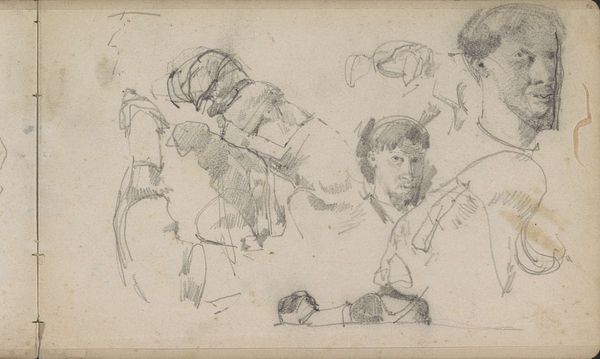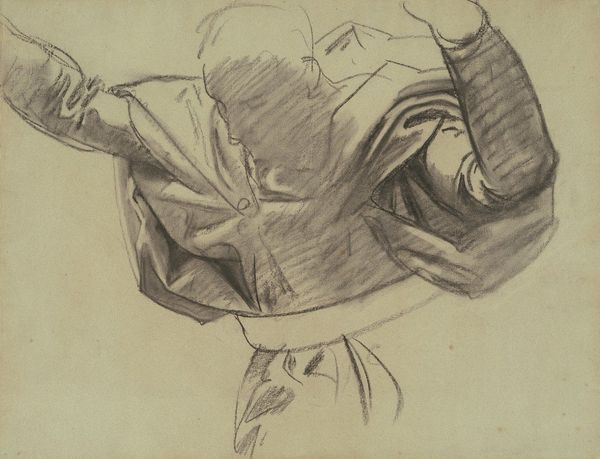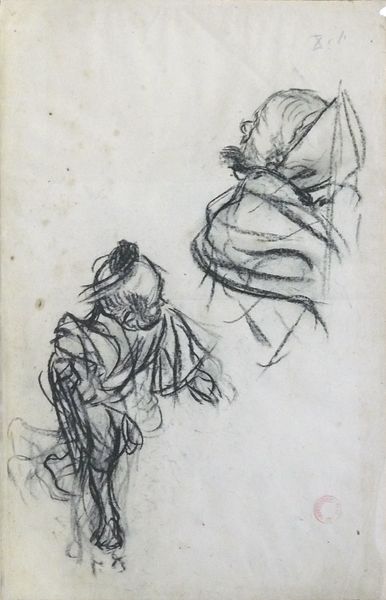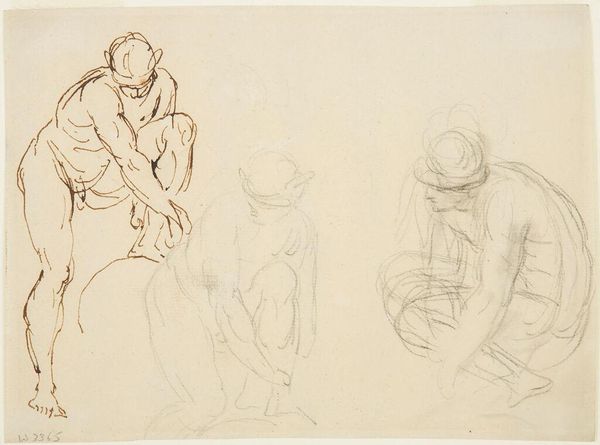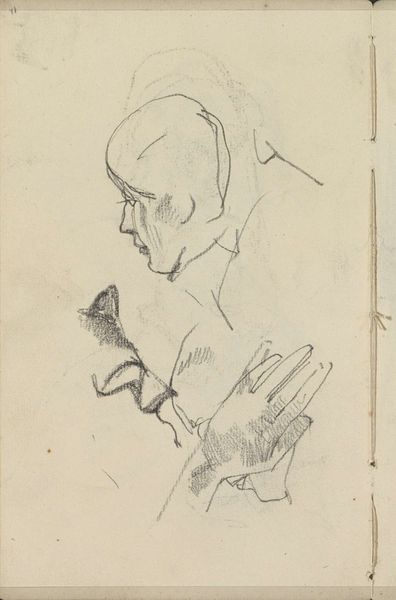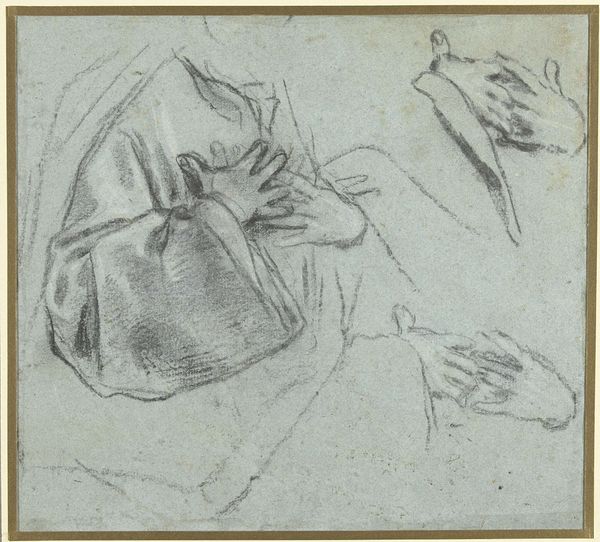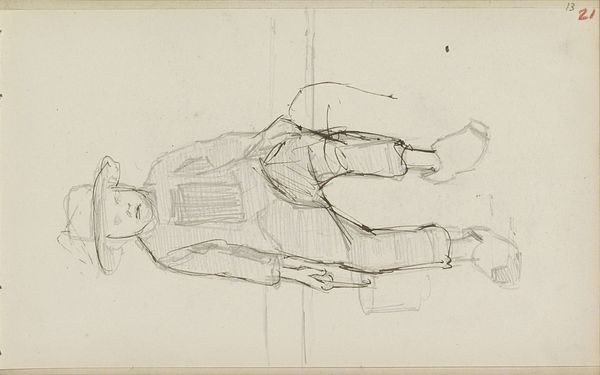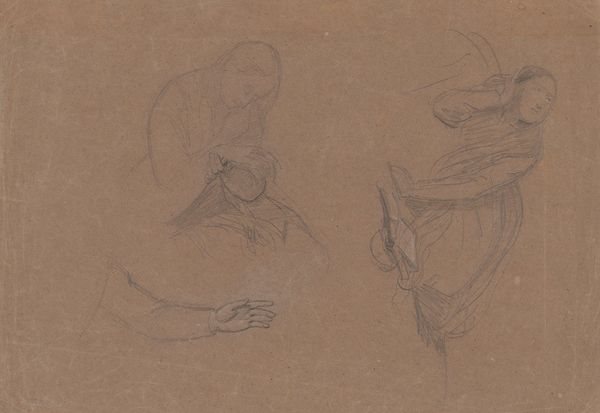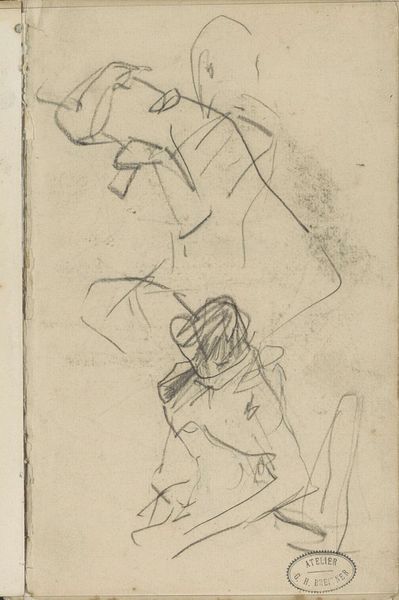
#
amateur sketch
#
light pencil work
#
pen sketch
#
pencil sketch
#
incomplete sketchy
#
personal sketchbook
#
ink drawing experimentation
#
pen-ink sketch
#
sketchbook drawing
#
sketchbook art
Copyright: Rijks Museum: Open Domain
Editor: So, here we have "Ezeljongen en twee ezels," or "Donkey Boy and Two Donkeys," by Isaac Israels, sometime between 1890 and 1920. It's currently housed here at the Rijksmuseum. The loose pencilwork and sketch-like quality gives it such an immediate, intimate feel. What catches your eye? Curator: It is remarkable how such economy of line can evoke such a world! Israels' sketches remind us that donkeys are potent symbols, historically associated with humility, patience, but also stubbornness or even foolishness, all bundled together. Consider the boy; does he guide or is he led? Editor: That's an interesting point about guidance. I was focused on the donkeys themselves and the somewhat simplistic composition. Curator: Simplistic perhaps in execution, but complex in evocation. Donkeys in art often appear as beasts of burden. This implies an economic or social reality—rural life, agricultural labour. But more than this, it might invite us to ponder our own burdens and those we place on others. The sketch quality also underscores a fleeting moment captured, like a memory resurfacing. Do you find the work compassionate or detached? Editor: I think it's more compassionate. The artist paid enough attention to create it in the first place! It seems affectionate to the subjects, and he is making a direct observation, rather than creating a harsh caricature. Curator: Indeed. The work is filled with cultural weight; images of rural life often stand as nostalgic symbols of simpler times. By engaging with those symbols, Israels both participates in and subtly comments on that cultural memory. It gives us much to contemplate. Editor: Absolutely. It's fascinating how seemingly simple sketches can unlock such profound meanings. Curator: Indeed. Each line carries the weight of cultural memory and untold stories.
Comments
No comments
Be the first to comment and join the conversation on the ultimate creative platform.

